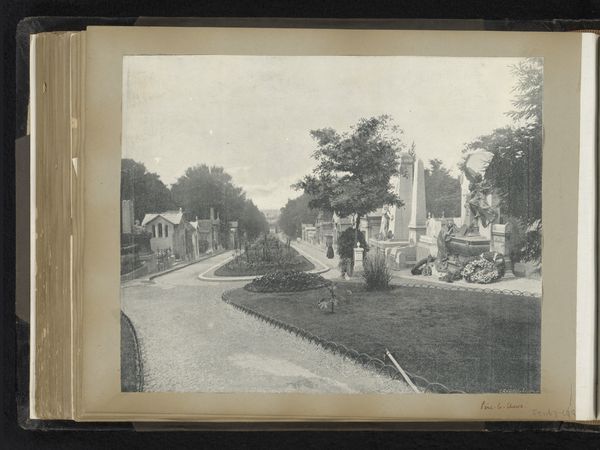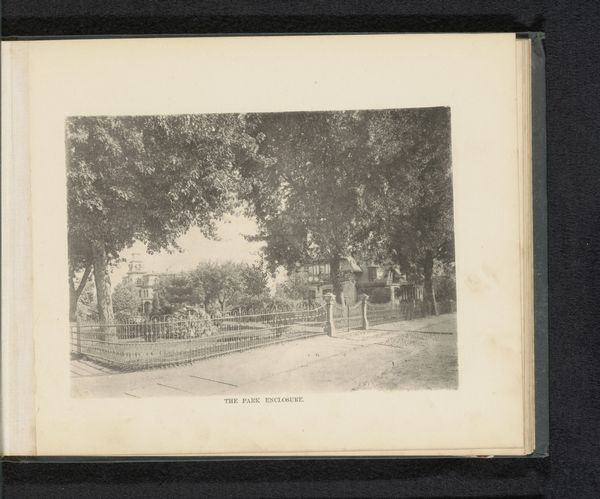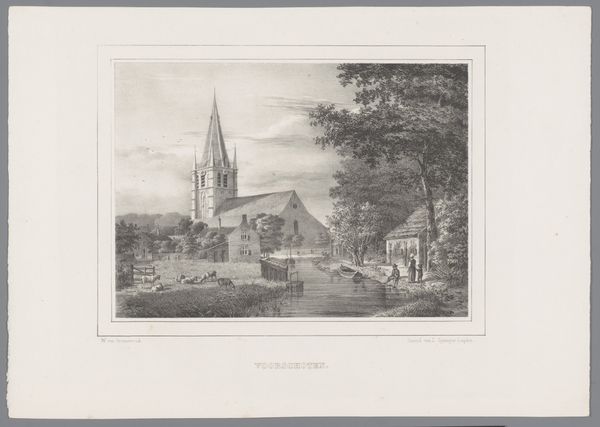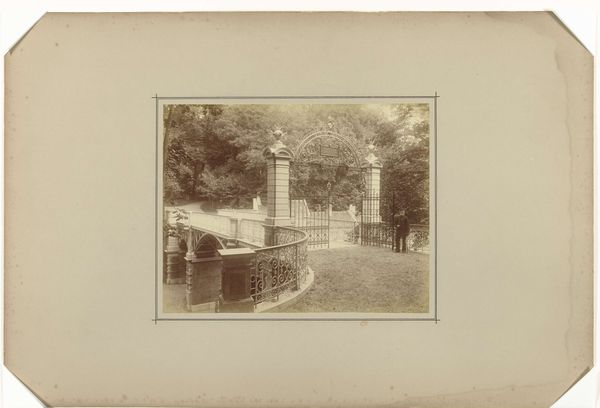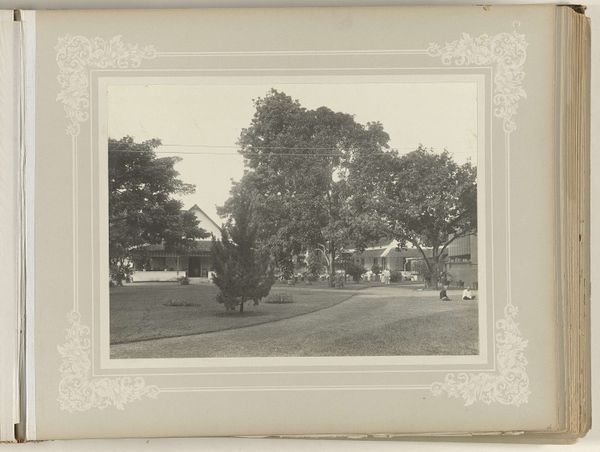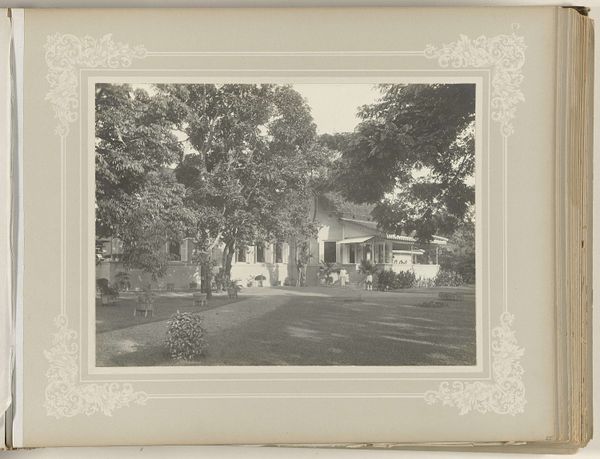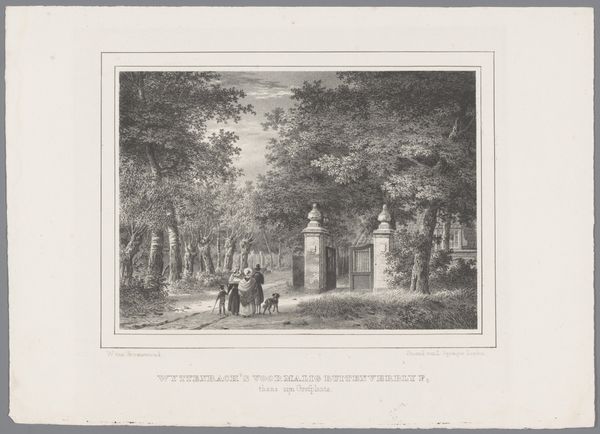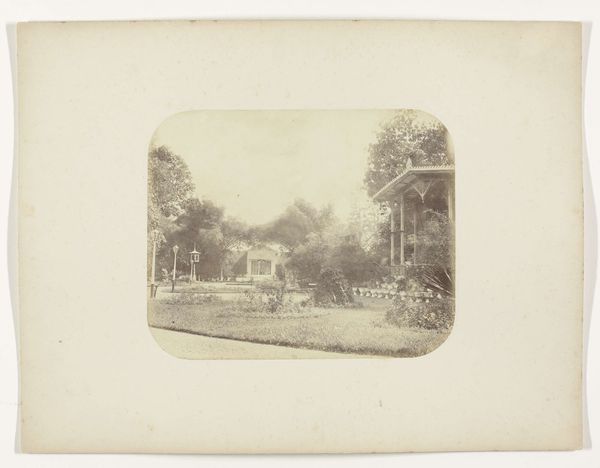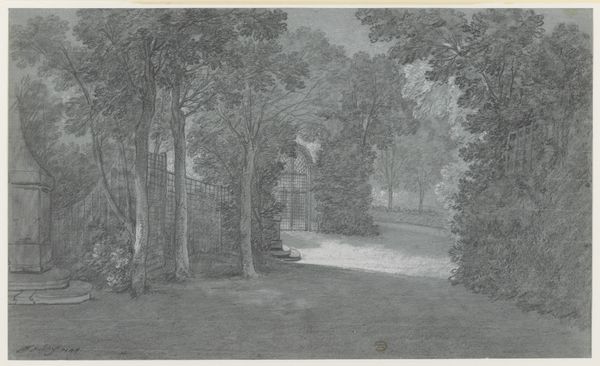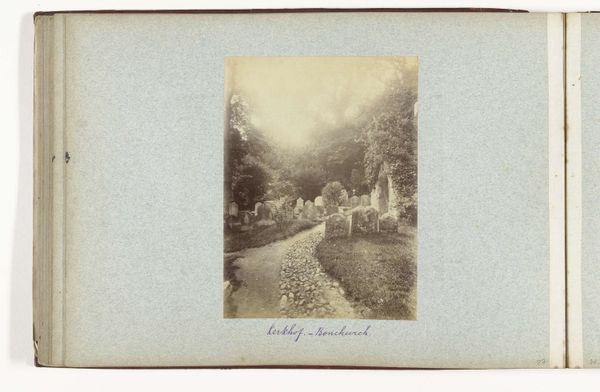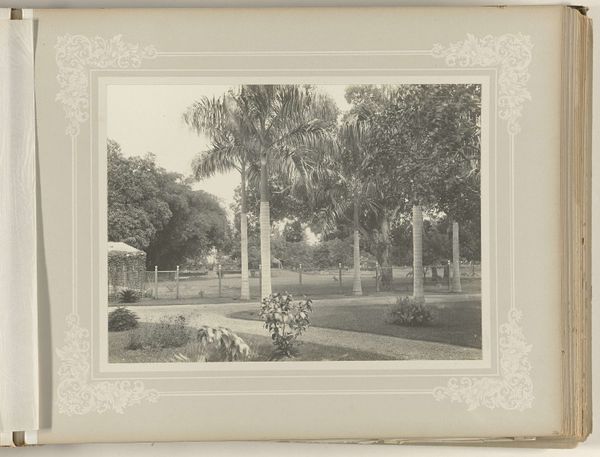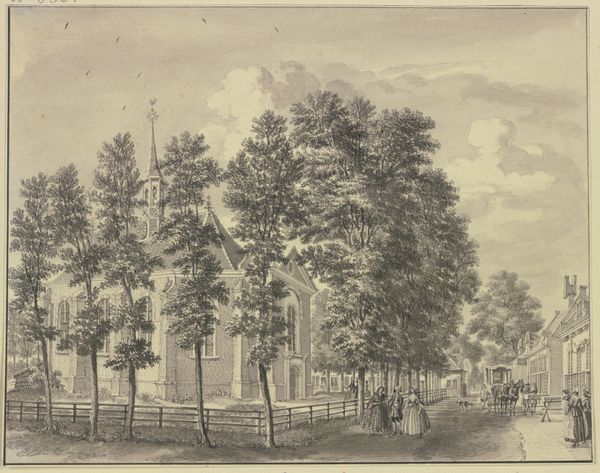
print, photography
# print
#
landscape
#
photography
Dimensions: height 230 mm, width 170 mm
Copyright: Rijks Museum: Open Domain
Curator: "Woonhuis," attributed to Otto Hisgen and dating between 1890 and 1910, offers us a glimpse into the past through the lens of early photography. Editor: Immediately, I get a sense of tranquility. It feels so peaceful. The photograph almost whispers. It invites you to stroll up that shaded lane towards the house. There’s such gentle stillness! Curator: Absolutely. Consider the setting, likely colonial given the architecture. This type of residence, captured in its photographic print, symbolized power and prosperity in a very specific social context. The house becomes more than just a dwelling. It’s a representation of hierarchy. Editor: Yes, but isn't it interesting how the very *act* of framing shifts our gaze? Like, here we are looking through somebody's eyes in the past, catching them admiring the house as they approached down that path. Curator: Indeed. Photography, during this period, had the ability to reinforce specific ideologies of control and the domestic ideal within the Empire. Note how nature is almost rigidly controlled – lines of trees almost marking boundaries. Editor: That is interesting… they seem too formally arranged, yes, and somehow also softened, dreamy... like it's staged to invite an idyllic, not necessarily realistic experience. Curator: Exactly! These visual signifiers contributed to a narrative intended to cement social norms. The photograph then, transcends simply documenting reality, it constructs it. Editor: You know, looking at it that way, I realize that the actual house is so diminutive. Like almost an excuse for everything in the foreground – nature, status, and how people should move through life. Curator: Precisely. Editor: Well, thinking about the way power shapes the view, even subconsciously, changes how I look at everything, really. Curator: Art indeed shapes how we see, even frames what and how we view the world around us. It makes the familiar, very often, quite unfamiliar.
Comments
No comments
Be the first to comment and join the conversation on the ultimate creative platform.
